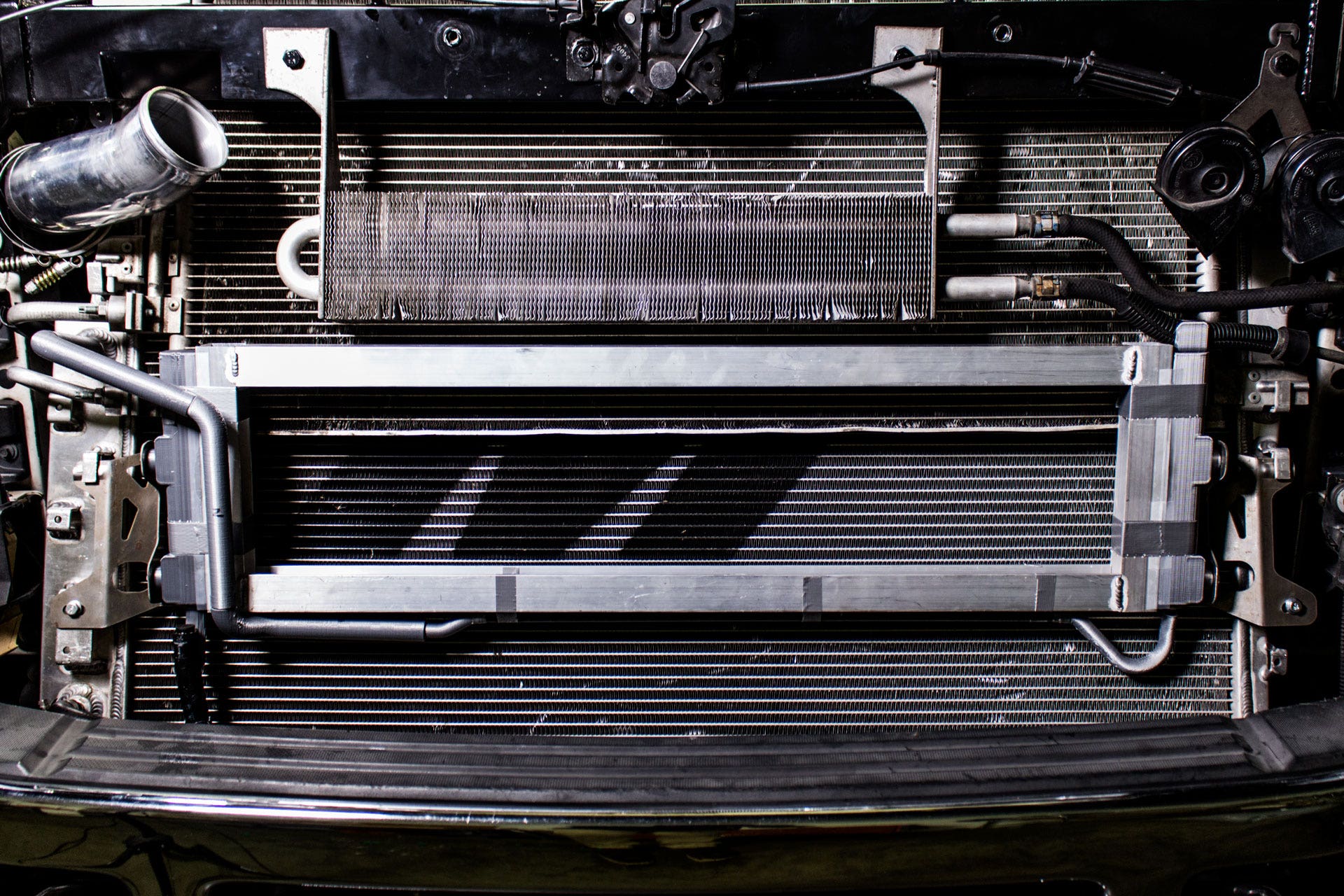
Redefine the Limits - Transmission Cooler R&D, Part 2: Design
The pre-sale for this trans cooler is now live! Click here to check it out!
As Dan inched our 6.7L F-350 onto the trailer, the October sun beat down onto the black asphalt. It wasn't even 11:00AM and the thermometer read almost 80°F; hot for October in Delaware, but perfect for transmission cooler testing. I climbed into our 6.0L F-250 follow vehicle while Dan cranked down the straps on the trailer and we set out for an afternoon filled with hills and valleys.
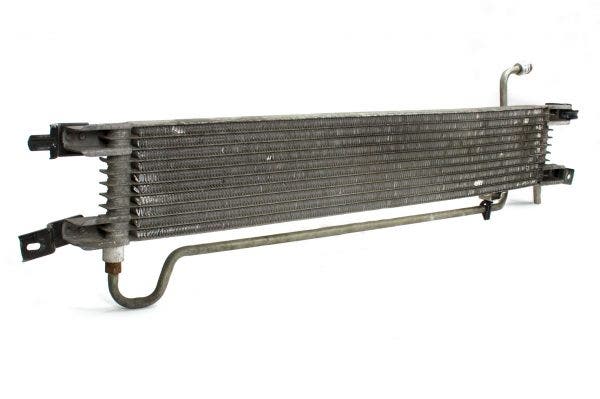
Our last look at the 6.4L Powerstroke transmission cooler revealed something a bit out of the ordinary for our blogs. Instead of highlighting all the failures of the stock transmission cooler, we shared that there really aren't many, yet. Yes, the stock 6.4L trans cooler is good enough. Good enough for a stock truck. Good enough for towing the recommended weight. Good enough for people who are okay with settling for good enough. But at Mishimoto, we don't settle. "Good enough" isn't good enough for us, and we're willing to bet it's not enough for you either. So, we're sticking to our moto and pushing the limits, even before they're found. We've spent months developing an upgraded transmission cooler for your 6.4L Powerstroke and it's time to show you what we've come up with.

In the world of automotive coolers, bigger is usually better. There are limitations to that philosophy, and most vehicles have other requirements that take precedence over sheer size. In the case of the 6.4L trans cooler, however, there aren't any major issues with the stock cooler that we needed to correct, so we were able to focus on making our cooler as large as possible. Of course, that goal wasn't without its challenges.
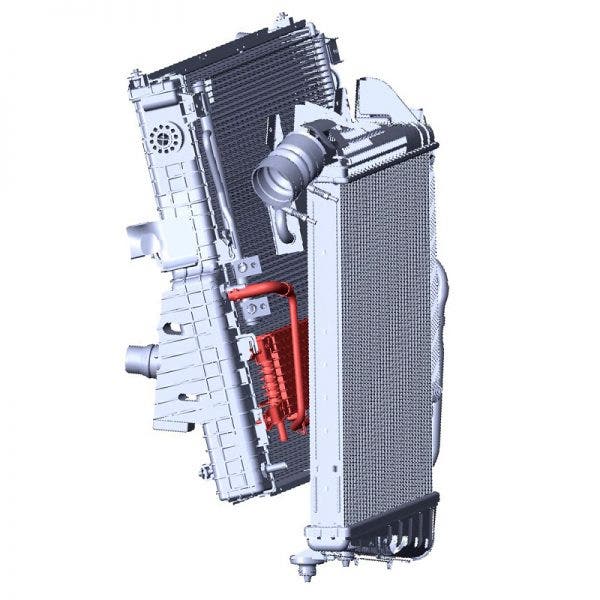
The cooling stack of the 2008-2010 6.4L Powerstroke fits together a bit like a can of Pringles; there's not a lot of room between components behind the grille. To make our job even harder, the transmission cooler sits between the intercooler and the radiator, with a power steering cooler and lines positioned right above it. That limited the space available for our cooler, but Ye had an idea to make the most of the space we had. All the components in the stack, aside from the intercooler at the very front, sit at an angle. The intercooler and radiator form a V shape with the transmission and power steering coolers sitting in the middle of that V. With some clever designing and the aid of 3D models, Ye was able to utilize the open area in the middle of V, mapping out the lines in the process to make the cooler a direct fit.
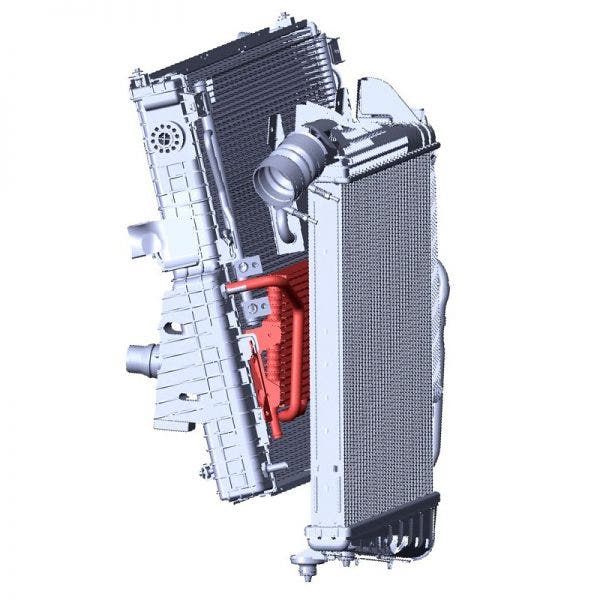
3D models are all well and good, but there's no substitute for the real thing. Well, prototypes are a pretty good substitute. There's a lot of complex geometry involved in Ye's design that must be spot on, so having a prototype that we could bolt to the truck was essential before we could start production. Our head fabricator, Mike, mocked up the outside dimensions of the core from u-channel aluminum while our 3D printers churned away building the end-tanks. The hose design was also critical, so we 3D printed those as well.
The final pieces of the puzzle, the parts that really make this design work, are two brackets that attach the cooler to the radiator and angle it out into the V of the cooling stack. These brackets include a lot of bends and slots that allow some adjustment to the angle of the cooler. Mike cut the brackets out on the waterjet and bent them to fit. We bolted the components onto the truck, and with the radiator reinstalled, we knew that Ye's design would fit. It was time to start production.
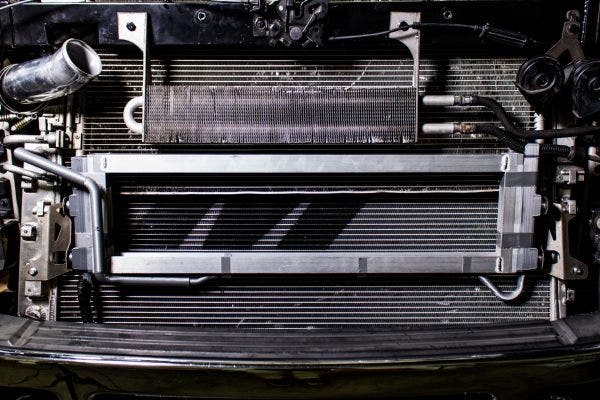
Shortly after the design was finalized, we had a production sample in the shop. Mike did a great job with the prototype core and brackets, but they both look far more impressive in final form. Ye didn't waste any time tearing into the cooling stack of our 6.4L to install our cooler. In just a few minutes, she had the intercooler out, which is impressive considering the intercooler is about as big as she is. In even less time, the stock transmission cooler was replaced with our cooler and we had our first look at the final product in its home.
The cooler clearly fit, but it's performance still needed to be tested. Luckily, we were having an unusually hot October, perfect weather for testing the cooling system. The several large trucks inhabiting our shop, and a trailer to put one of them on, would be enough weight to make the true to life. Under these circumstances, we could really see what the prototype trans cooler was made of.
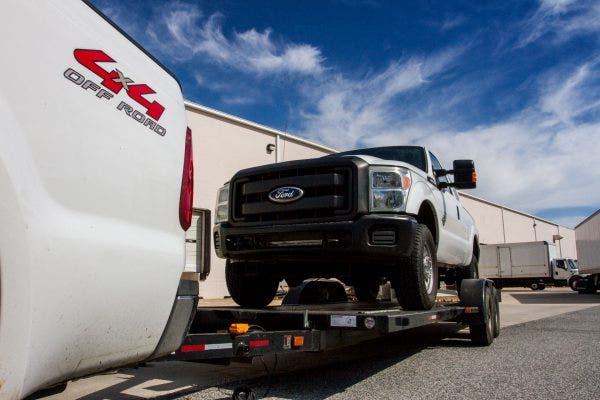
Now, Delaware is not exactly known for its mountainous terrain. About half an hour west of our facility lies Maryland. Aptly nicknamed "little America," Maryland is home to beaches, wide open fields, and thankfully, rolling hills and mountains. With our 2011 6.7L F-350 loaded onto the trailer, we headed west. The terrain transitioned from flat fields and waterways to steep rolling hills. A long stretch of hills with grades ranging from 4-7% made for the best area to collect data. We hit record on our AEM data-loggers and started weighing down the pedal.
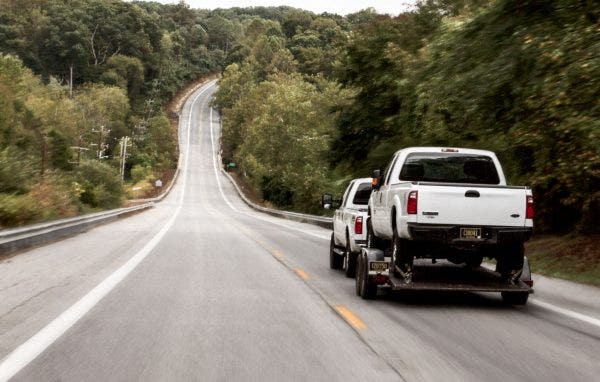
As the sun lowered and the temperature dropped in tow, we concluded our testing. We recorded several runs with both our cooler and the stock transmission cooler after doing a quick swap in the field. With an 80°F ambient temperature and the air over the asphalt hovering around 90°F, the cooler had its work cut out for it. However, Ye was confident that the 63% larger core volume and 121% greater fin surface area would yield significant performance improvements. She was not disappointed.
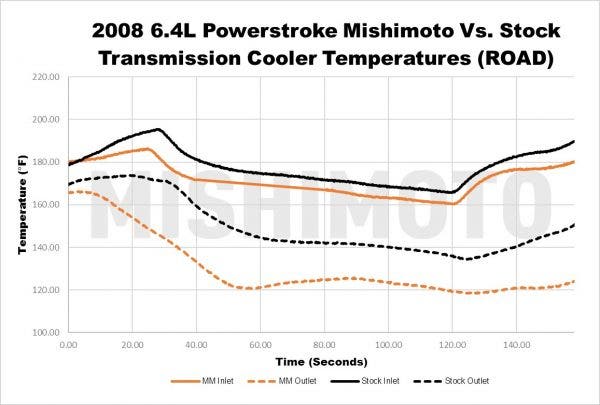
The compiled data showed that at peak performance our transmission cooler lowered inlet temperatures by up to 10°F and outlet temperatures by up to 20°F. Eager to verify our results in a more scientific format, we turned to our in-house Dynapacks. The Dynapacks allow us to put a set amount of load on the truck for consistent testing, free from traffic and in the controlled environment of our facility. While we were road testing, we closely monitored the calculated load reported by the truck's computer. We then set our Dynapacks to replicate that load and began testing. After warming up the truck, we completed several two-minute runs at 70% load with each cooler. The results matched our road testing. Again, our cooler produced a 10°F drop at the inlet and 20°F drop at the outlet when compared to the stock cooler. Proof positive that bigger is usually better.
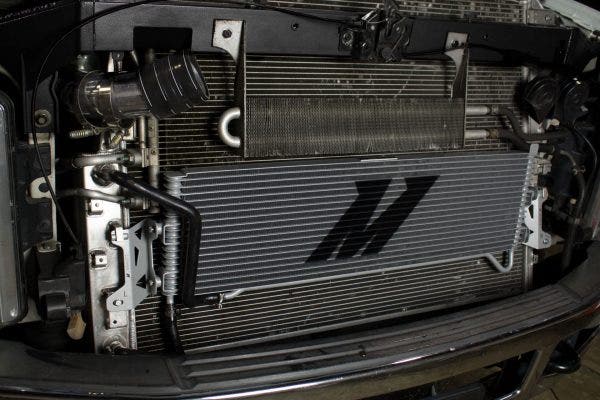
Our 6.4L transmission cooler looks great, fits like a glove, and cools leagues above the stock cooler. Now all that's left to do is produce it. This is where I say goodbye for now, but I'm happy to say we have good news: the pre-sale for this trans cooler is now live. This will be your chance to upgrade your 6.4L's transmission cooler and ready it for anything you or the world can throw at it, while saving some money.
Keep pushing the limits, even if you haven't found them yet.
Thanks for reading,
-Steve




